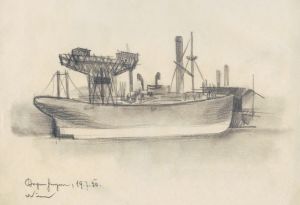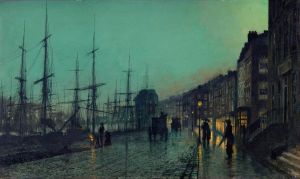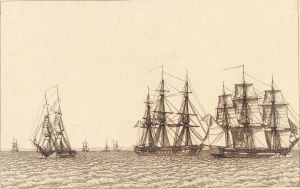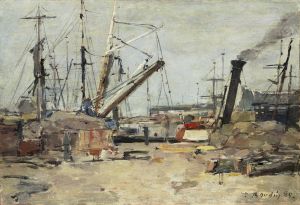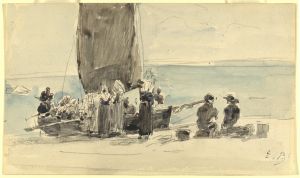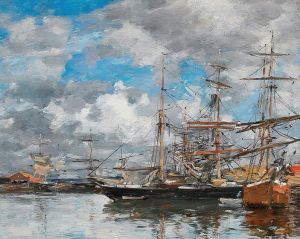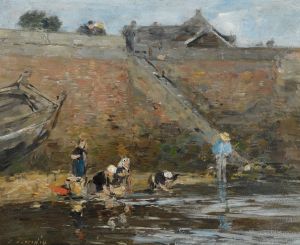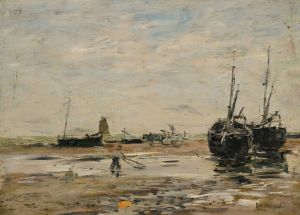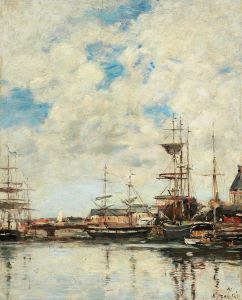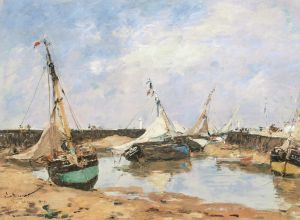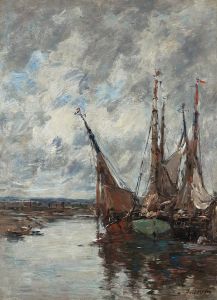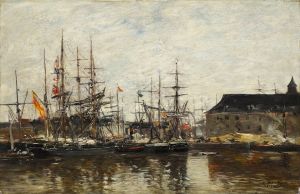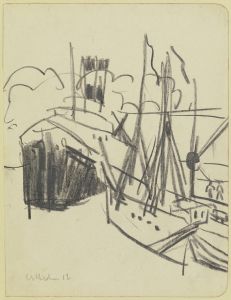
The Dock of Deauville
A hand-painted replica of Eugène Boudin’s masterpiece The Dock of Deauville, meticulously crafted by professional artists to capture the true essence of the original. Each piece is created with museum-quality canvas and rare mineral pigments, carefully painted by experienced artists with delicate brushstrokes and rich, layered colors to perfectly recreate the texture of the original artwork. Unlike machine-printed reproductions, this hand-painted version brings the painting to life, infused with the artist’s emotions and skill in every stroke. Whether for personal collection or home decoration, it instantly elevates the artistic atmosphere of any space.
Eugène Boudin's painting The Dock of Deauville is a notable work by the French artist, who is widely regarded as one of the precursors of Impressionism. Boudin, born in 1824 in Honfleur, France, was known for his depictions of coastal scenes, harbors, and the interplay of light and atmosphere. His works often captured the essence of life in seaside towns, and The Dock of Deauville is no exception.
Deauville, located in the Normandy region of France, was a fashionable seaside resort during Boudin's time. The town became a popular destination for the French elite in the 19th century, known for its beaches, horse racing, and luxurious lifestyle. Boudin frequently painted scenes from Deauville and its surroundings, showcasing the daily activities of its residents and visitors. His works often depicted the docks, markets, and beaches, reflecting his fascination with maritime life and the changing effects of light on water and sky.
In The Dock of Deauville, Boudin employs his characteristic loose brushwork and attention to atmospheric effects. The painting captures the bustling activity of the dock area, with boats, workers, and possibly visitors going about their day. The composition highlights Boudin's skill in portraying the dynamic interaction between human activity and the natural environment. His use of light and color creates a sense of immediacy, drawing the viewer into the scene.
Boudin's approach to painting was influenced by his early exposure to the Barbizon School and his friendships with artists such as Claude Monet. His dedication to painting en plein air (outdoors) allowed him to study the transient effects of light and weather, which became a hallmark of his work. This technique is evident in The Dock of Deauville, where the interplay of light and shadow adds depth and vitality to the scene.
While specific details about the creation date and current location of The Dock of Deauville are not readily available, the painting is representative of Boudin's broader body of work, which often focused on maritime themes. His contributions to art were recognized during his lifetime, and he exhibited regularly at the Paris Salon. Today, Boudin's works are celebrated for their role in bridging the gap between the Barbizon School and the Impressionist movement.
Eugène Boudin's legacy as a master of atmospheric painting endures, and The Dock of Deauville remains an example of his ability to capture the beauty and vitality of coastal life in 19th-century France.





